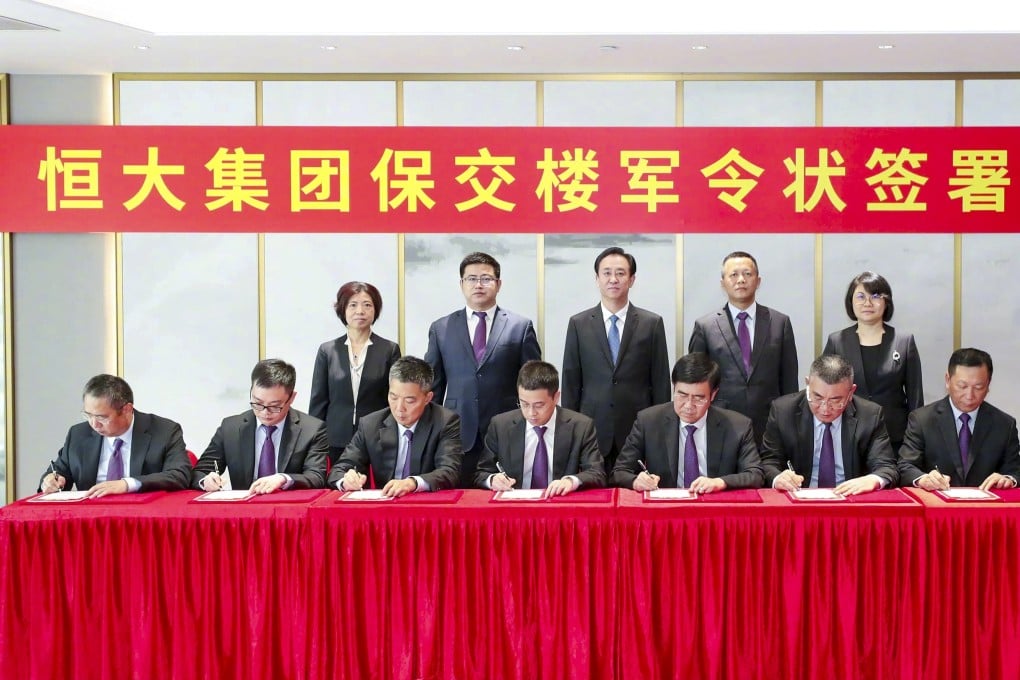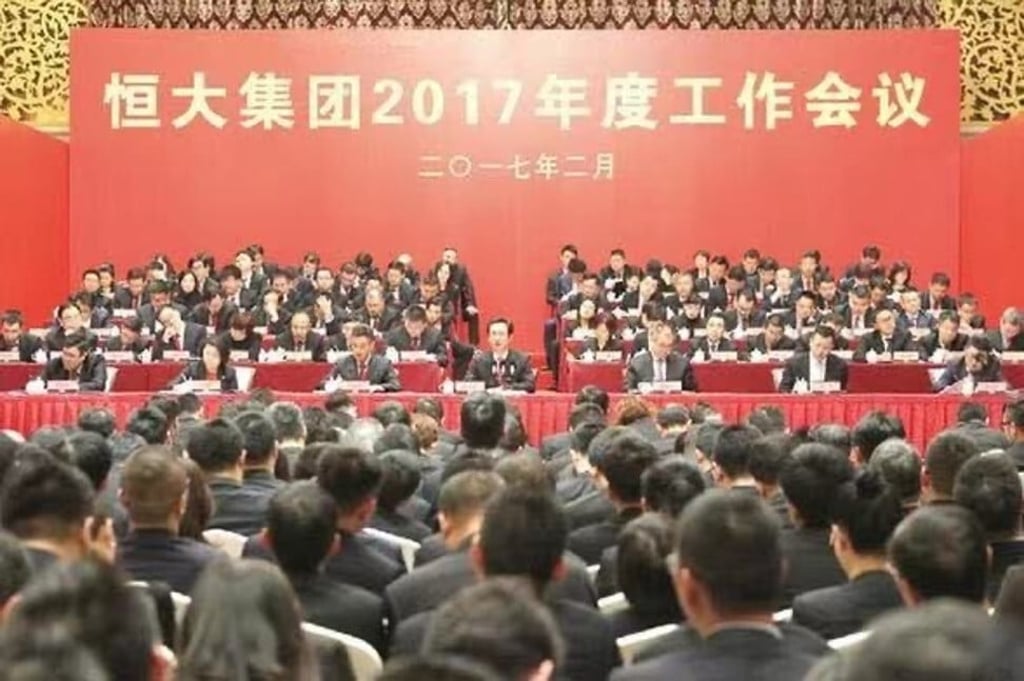Advertisement
Evergrande: Hui Ka-yan’s childhood dreams fuelled a debt binge and audacious goal that has left the world on tenterhooks
- Hui Ka-yan set an audacious three-year goal in 2017 for China Evergrande Group to hit 1 trillion yuan in sales, almost five times what it made in 2016
- Evergrande borrowed to build at low cost, selling its apartments off-plan, and using the high turnover to generate cash flow to fund growth
Reading Time:7 minutes
Why you can trust SCMP
16

The first of a three-part series on the China Evergrande Group looks at how the world’s most indebted developer grew to its current size and how it avoided scrutiny when China’s authorities cracked down on debt in 2017.
On an overcast Monday in early 2017, Hui Ka-yan chaired a staff meeting in Guangzhou, where he set an audacious goal for China Evergrande Group, one that would land the developer four years later in the eye of a storm that is ripping across the financial world.
Sitting on a raised podium with the most senior executives to his sides and behind him, Hui outlined Evergrandes’s growth and diversification plans in a speech that rambled on for three hours. Then headquartered in the Guangdong provincial capital, and bolstered by a 60 per cent revenue surge a year earlier, Evergrande wanted to hit 1 trillion yuan (US$154.8 billion) in sales by 2020, almost five times its 2016 turnover, according to a Xinhua News Agency report.
Advertisement
Outside Evergrande’s windows that February morning, a regulatory storm was gathering, as the Chinese overseers of banking, insurance and securities led by the People’s Bank of China came crashing down on the country’s most profligate asset buyers. Regulators were concerned that bank loans were mounting too quickly, raising the spectre of capital flight as onshore loans were used to buy offshore trophies without adding anything to China’s economy. Worse still, some companies were selling wealth management insurance products to the public, using them as financial war chests to fund their shopping sprees.
The crackdown intensified two months after Hui’s marathon speech, leading to the break-up and downsizing of four of China’s biggest private conglomerates: Anbang Group, CEFC Group, Dalian Wanda Group and the HNA Group. HNA’s founder Chen Feng and chief executive Adam Tan Xiangdong were detained by police for suspected “criminal offences,” the company said on Friday, without elaborating.
Advertisement

But Evergrande was mostly spared, except for a rap on the knuckles of its Evergrande Life unit for a failed attempt to take over rival developer China Vanke Group. It continues to sell wealth management products to this day after stepping into line with regulators’ instructions.
Advertisement
Select Voice
Choose your listening speed
Get through articles 2x faster
1.25x
250 WPM
Slow
Average
Fast
1.25x